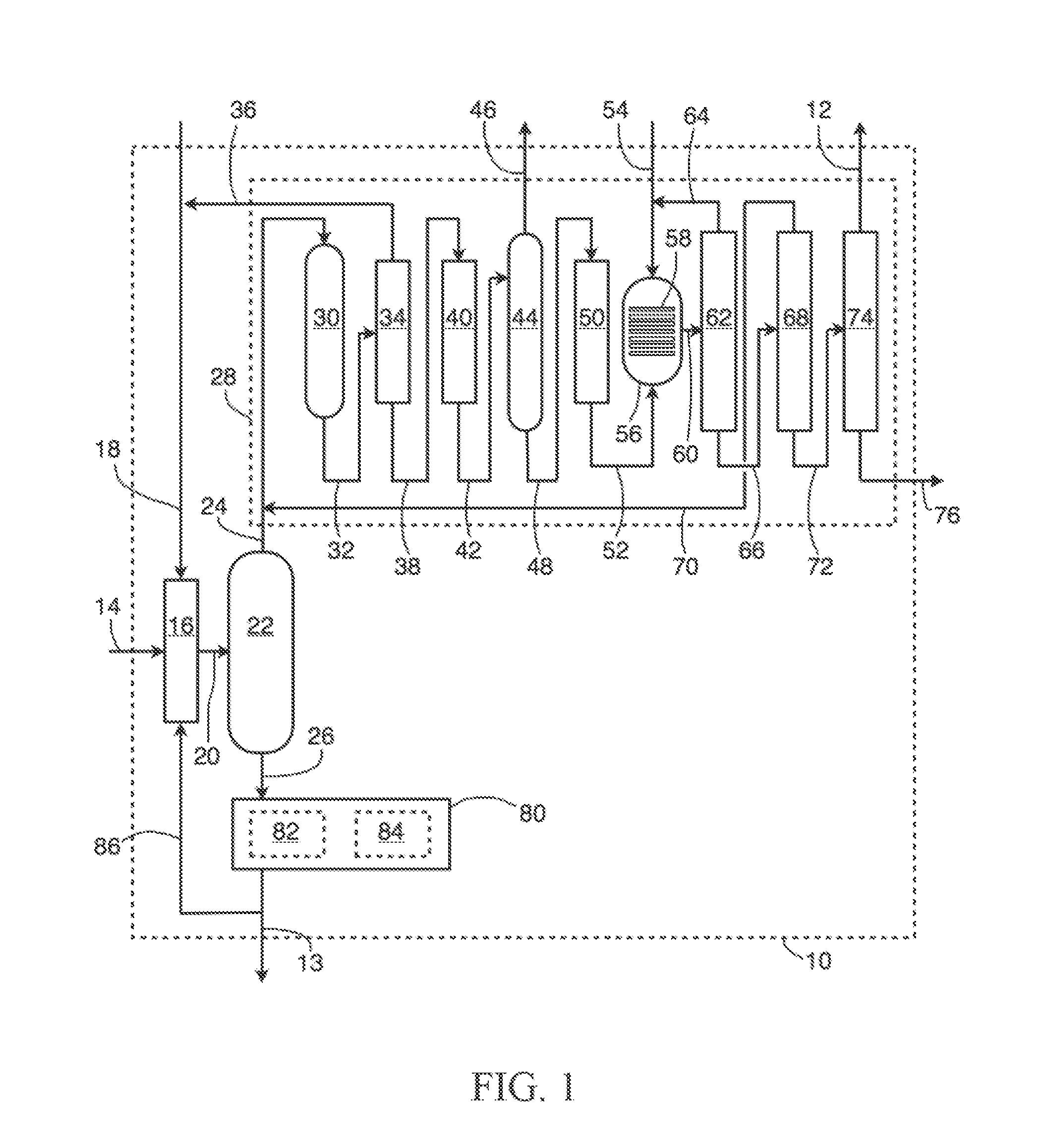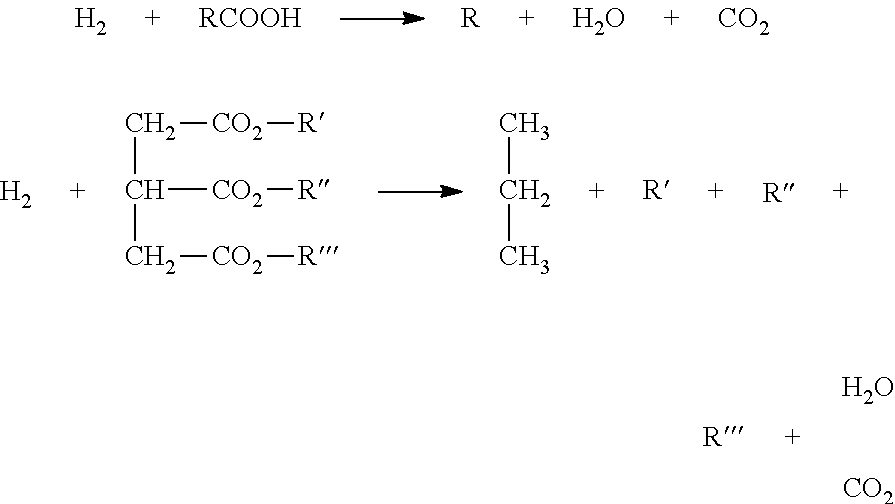Methods for co-production of alkylbenzene and biofuel from natural oils
a biofuel and alkylbenzene technology, applied in the field of co-production of alkylbenzene and biofuel, can solve the problems of difficult utilization of renewable energy sources, and the inability to create alkylbenzenes from renewable sources
- Summary
- Abstract
- Description
- Claims
- Application Information
AI Technical Summary
Benefits of technology
Problems solved by technology
Method used
Image
Examples
Embodiment Construction
[0011]The following Detailed Description is merely exemplary in nature and is not intended to limit the invention or the application and uses of the invention. Furthermore, there is no intention to be bound by any theory presented in the preceding Background or the following Detailed Description.
[0012]Various embodiments contemplated herein relate to methods and systems for co-production of an alkylbenzene product and biofuel from natural oils. In FIG. 1, an exemplary system 10 for producing an alkylbenzene product 12 and biofuel 13 from a natural oil feed 14 is illustrated. As used herein, natural oils are those derived from plant or algae matter, and are often referred to as renewable oils. Natural oils are not based on kerosene or other fossil fuels. In certain embodiments, the natural oils include one or more of coconut oil, babassu oil, castor oil, cooking oil, and other vegetable, nut or seed oils. The natural oils typically comprise triglycerides, free fatty acids, or a combi...
PUM
| Property | Measurement | Unit |
|---|---|---|
| chain length | aaaaa | aaaaa |
| length | aaaaa | aaaaa |
| concentration | aaaaa | aaaaa |
Abstract
Description
Claims
Application Information
 Login to View More
Login to View More - R&D
- Intellectual Property
- Life Sciences
- Materials
- Tech Scout
- Unparalleled Data Quality
- Higher Quality Content
- 60% Fewer Hallucinations
Browse by: Latest US Patents, China's latest patents, Technical Efficacy Thesaurus, Application Domain, Technology Topic, Popular Technical Reports.
© 2025 PatSnap. All rights reserved.Legal|Privacy policy|Modern Slavery Act Transparency Statement|Sitemap|About US| Contact US: help@patsnap.com



